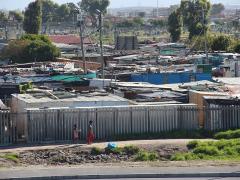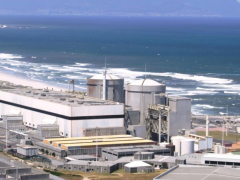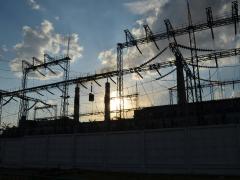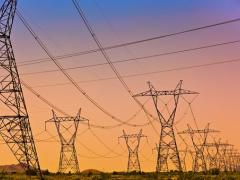South Africa is on course to “waste” R250 billion every year by clinging to coal, nuclear and gas instead of fully embracing a renewables- and storage-led future, says independent energy analyst Clyde Mallinson.
“The IRP’s insistence on gas and nuclear means consumers will pay 60-70% more for electricity than necessary,” he argues.
Mallinson has developed an alternative model based entirely on solar, wind and battery storage without relying on new coal, gas or nuclear capacity. His findings show that such a system would save R250 billion in electricity generation costs annually by 2040 compared to the mix set out in the Integrated Resource Plan (IRP) 2025.
By then, he says, South Africa could be operating on 90 GW of solar, 60 GW of wind and 50 GW of storage, eliminating the need for fossil and nuclear technologies. “And, with R250 billion a year in savings, government could build as much grid and auxiliary services as the country requires,” he notes.
Electricity and Energy Minister Kgosientsho Ramokgopa has put the capital cost of IRP 2025 at R2,2 trillion but Mallinson emphasises that this is net present value. At 2042 prices, he estimates the actual cost is US$199 billion (R3,4 trillion). By contrast, a renewables-plus-storage pathway would cost around US$135 billion (R2,3 trillion) in 2042 – a saving of US$64 billion (about R1.09 trillion) – while generating roughly 120 TWh of surplus electricity each year.
This surplus, once storage requirements are met, would deliver abundant, ultra-low-marginal-cost daytime electricity. Mallinson says South Africa should treat this surplus not as a liability but a national advantage. “We can use this surplus to eliminate energy poverty for 12 million South African households with smarter tariff design and upgraded distribution networks. The country could offer ‘uncapped’ daytime electricity, much like uncapped Wi-Fi, at almost zero marginal cost – constrained only by household breaker limits.”
IRP 2025: A plan anchored in the past
Minister Ramokgopa maintains that gas-to-power is essential for grid stability. Mallinson argues that the IRP is rooted in outdated assumptions and is out of sync with the way modern power systems are evolving. He says incumbents remain trapped in the traditional logic of matching supply to demand instead of shifting demand to align with abundant renewable supply and designing systems with intentional overproduction and flexible demand that benefits from surplus energy.
His model shows that, if South Africa builds enough wind, solar and storage to survive its worst three or four winter days, the system will automatically generate surplus electricity on about 97% of days.
“Incumbents treat surpluses with the same fear as shortfalls because of grid-balancing and curtailment concerns. But surplus is not the mirror image of load shedding – it is an opportunity,” says Mallinson.
He draws an analogy: “South Africa produces more food than it consumes yet thousands of children die each year from malnutrition and starvation. The problem isn’t supply – it’s access and affordability. Electricity is the same. People in energy poverty want more electricity. They just can’t afford it. Our task must be to get surplus energy to the people who need it and to increase demand at times when we have plenty,” he says.
Mallinson warns that South Africa is overly fixated on expensive transmission megaprojects while neglecting the distribution grids that deliver power into townships and dense urban neighbourhoods. “Without upgraded distribution networks, surplus electricity will never reach the people who need it most.”
Storage must become a daily workhorse
Mallinson also challenges how storage is treated in the IRP 2025. “South Africa’s pumped storage plants currently cycle only once a week and the IRP’s battery assumptions show similarly limited use. That reflects a flawed build mix,” he says.
“You only use storage properly when you remove coal, gas and nuclear. Storage should charge daily from solar energy and discharge at night. It must be a daily workhorse – not an occasional backup tool.”













